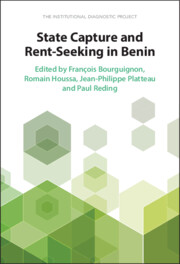Appendix
First elected president – Hubert Maga: 1 August 1960–24 October 1963.
Coup d’état by Colonel Christophe Soglo, chef d’état major: 27 October 1963–January 1964.
◦ New constitution 11 January 1963.
Sourou-Migan Apithy became president after election: January 1964–November 1965.
Coup d’état – military government took power: November 1965.
◦ Sourou-Migan Apithy set back and Tahirou Congacou, president of the parliament, became president and ran a transition to a new government.
Tahirou Congacou: 29 November 1965–22 December 1965.
Coup d’état – General Christophe Soglo: 22 December 1965–16 December 1967.
◦ Development project CFDT, SATEC.
◦ Coup d’état by low-ranking officers.
Coup d’état – Colonel Maurice Kouandété: 17 December 1967–21 December 1967.
Coup d’état – Colonel Alphonse Alley: 21 December 1967–17 July 1968.
◦ New constitution 11 April 1968.
◦ New election 15 May 1968, for which the three regional leaders were excluded as candidates; in the election only 26 per cent of voters showed up.
◦ Among the five candidates Adjou Moumouni obtained 84 per cent of the votes.
◦ The results of the election were annulled.
Alphonse Alley formed a new government in May 1968.
The military regime appointed Emile Derlin Zinsou as the new president: 31 July 1968–December 1969.
◦ But he accepted only on the condition that a referendum regarding his appointment be held. His candidacy was supported by 76.4 per cent of voters, with a 72.6 per cent turnout.
Coup d’état by Colonel Maurice Kouandété: December 1969.
Election in 1970, but the results were annulled because of an issue of low turnout during the election.
Conseil Présidentiel was a triumvirate (Apithy–Maga–Ahomadégbé) system of government: 7 May 1970–26 October 1972.
◦ Hubert Maga: 7 May 1970–May 1972.
◦ Justin Ahomadégbé: 7 May 1972–26 October 1972.
Coup d’état – Mathieu Kérékou: 1972–1989.

